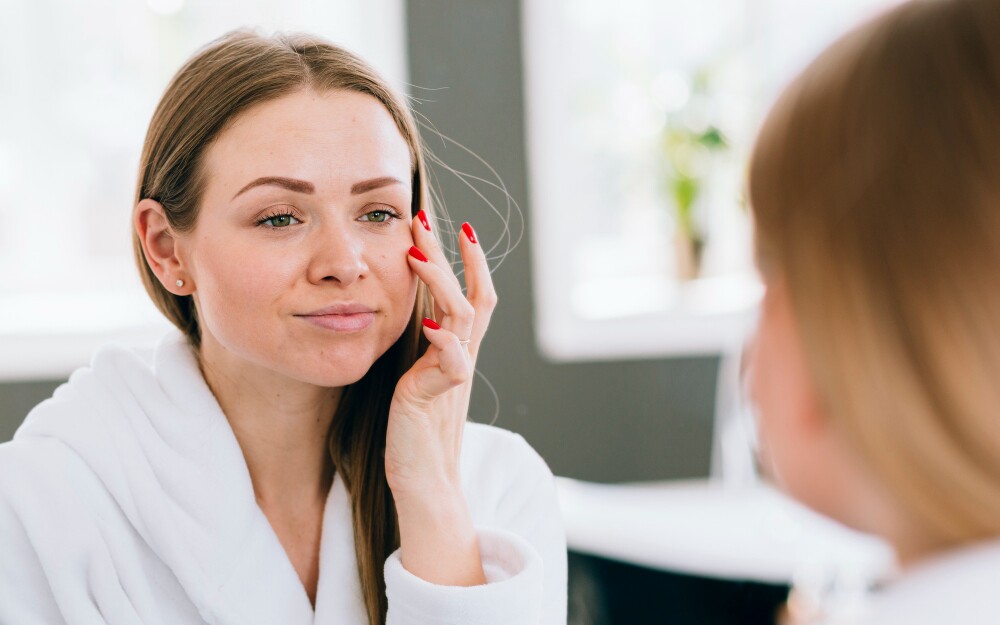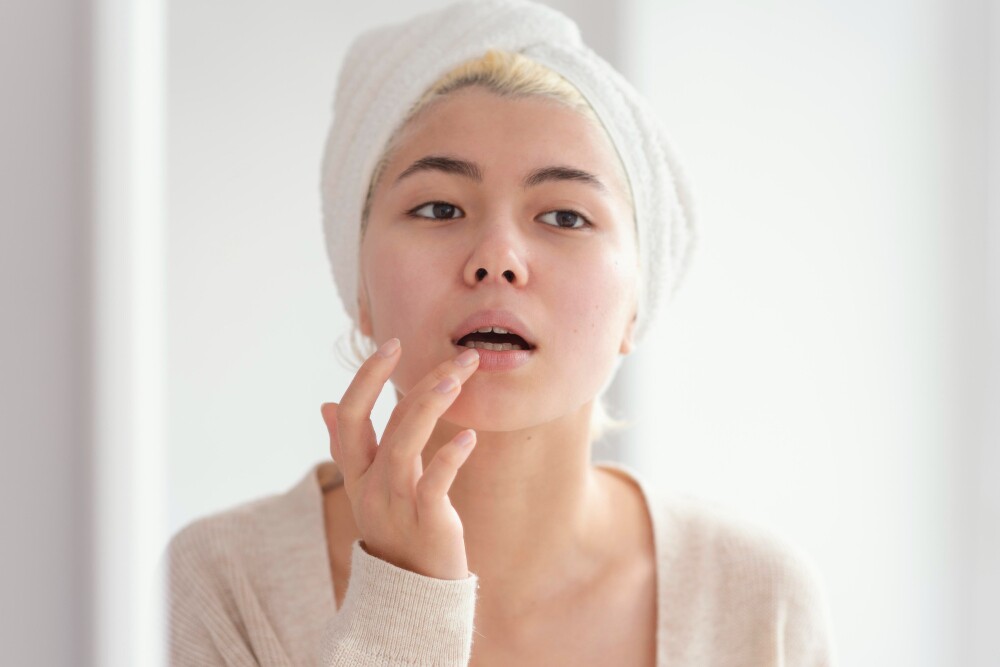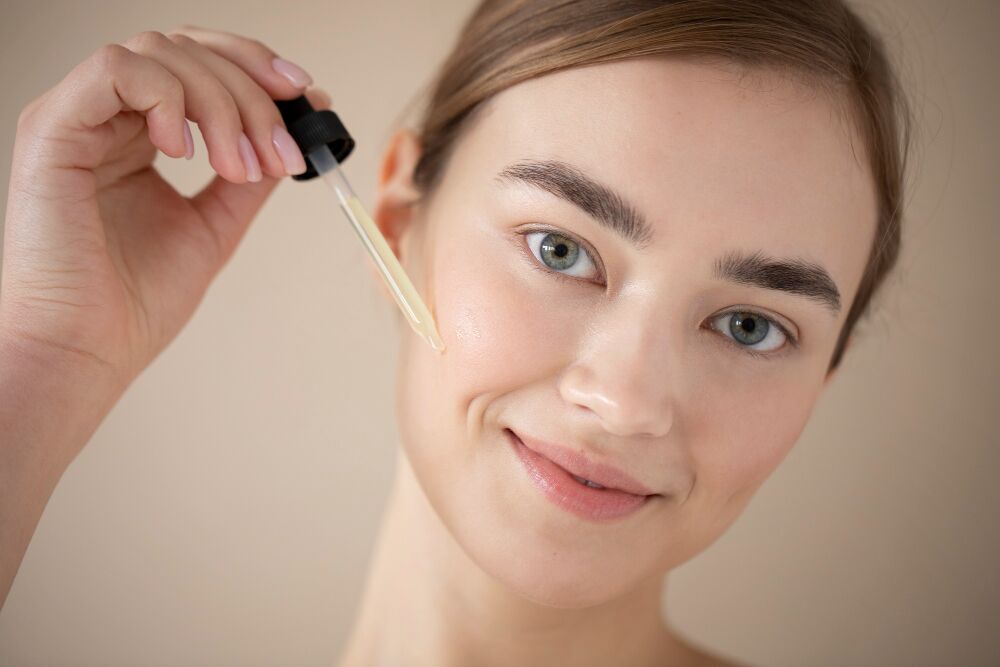How to Cure Dark Circles Permanently

Dark circles under the eyes are a widespread cosmetic concern that can detract from an otherwise bright and youthful appearance. Unfortunately, the desire for a permanent cure is often elusive. While completely eliminating dark circles might not always be possible, understanding the root causes and implementing targeted solutions can significantly reduce their appearance, leaving you with a refreshed and revitalized look.
What Causes Dark Circles?
Dark circles stem from various factors, some of which are more easily addressed than others. Here are some key contributors:
- Thinning Skin and Loss of Fat: The skin under our eyes is delicate. As we age, it becomes thinner, and underlying blood vessels become more noticeable, contributing to a bluish or purplish hue. Additionally, natural loss of fat can produce hollowing, revealing deeper structures.
- Hyperpigmentation: Excess melanin production can lead to darkening of the skin under the eyes. This can be triggered by chronic sun exposure, genetics, or inflammatory conditions.
- Allergies and Inflammation: Reactions to allergens like pollen or dust, or irritants in cosmetic products, can lead to inflammation and fluid accumulation in the under-eye area. This swelling and associated blood vessel dilation cause those telltale dark shadows.
- Sleep Deprivation: Poor sleep or consistently short sleep periods disrupt healthy blood flow and overall bodily functions. This shows up as under-eye puffiness and emphasizes dark shadows.
- Genetics: Sadly, your genes play a big role. There are hereditary tendencies toward thinner under-eye skin, a greater likelihood of fat loss, and hyperpigmentation in certain ethnicities.
- Dehydration: Lack of hydration can cause the skin to look dull and emphasize shadows under the eyes.
- Medical Conditions: Underlying conditions like thyroid disorders, anemia, or eye-related problems can exacerbate dark circles. It’s essential to rule out these potential causes.
Realistic Expectations: What “Cure” Really Means
The word “cure” can be misleading. While certain lifestyle changes, interventions, and treatments will undeniably improve the look of dark circles, expecting them to vanish permanently could lead to disappointment. Realistically, management of contributing factors and ongoing skincare will offer the best long-term results.
Strategies for Reducing the Appearance of Dark Circles
There are multiple approaches to tackle dark circles, with the most effective solutions tailored to the underlying causes.
1. Lifestyle Adjustments:
- Prioritize Sleep: Aim for 7-8 hours of quality sleep to promote healthy blood circulation and reduce the appearance of under-eye shadows.
- Hydration: Drink plenty of water throughout the day to keep your skin plump and diminish dullness.
- Healthy Diet: A balanced diet rich in fruits, vegetables, and whole grains nourishes your skin from within. Limit sodium intake that can worsen puffiness.
- Manage Allergies: Identify and minimize contact with triggers to ease inflammation and associated dark circles.
- Sun Protection: Always wear sunglasses and use sunscreen religiously under your eyes to ward off further sun damage and pigmentation.
2. At-Home Remedies:
- Cold Compresses: Wrap an ice pack or chilled spoons in a soft cloth and apply them to your closed eyelids for 10-15 minutes. Coldness constricts blood vessels and reduces swelling.
- Cucumber Slices: Cucumbers have a soothing, hydrating effect and contain mild skin-lightening properties.
- Tea Bags: Caffeinated green or black tea bags placed over the eyes can temporarily tighten the skin and reduce puffiness.
- Vitamin C: Using under-eye products rich in vitamin C could reduce pigment deposition.
3. Professional Treatments:
If lifestyle changes and home remedies show minimal improvement, you may benefit from the following professional solutions:
- Topical Creams: Your dermatologist can prescribe brightening creams, containing ingredients like hydroquinone, retinol, or kojic acid, which can help fade hyperpigmentation over time. Exercise caution – potential side effects should be carefully considered.
- Chemical Peels: These controlled superficial skin injuries cause renewal and can address pigmentation in resistant cases.
- Laser Therapy: Specific types of lasers, such as Q-switched lasers, target excess pigment and stimulate collagen production under the eyes. Results may vary based on skin type and several sessions could be needed.
- Dermal Fillers: Injections of hyaluronic acid fillers can restore lost volume under the eyes, lessening the hollow appearance and minimizing darkness. Results last for several months and require repeat treatments.
- Surgery: Blepharoplasty is a surgical option in severe cases, where excess fat or loose skin creates deep shadows. This invasive procedure, however, is usually considered a last resort with potential risks.
Additional Considerations
- Iron Supplements: If anemia (lack of iron) is suspected as a contributor to your dark circles, your doctor may suggest iron supplements after confirming the diagnosis.
- Vitamin K: Though inconclusive, studies suggest that topical vitamin K creams might slightly improve the appearance of dark circles in some cases.
- Makeup and Camouflage Techniques: While not a cure, applying concealer and color-correcting makeup can create the illusion of brighter, more even-toned under-eyes. Consult with a makeup artist to find the right shades and techniques.
Important Caveats
- Individual Variation: It’s paramount to remember that dark circles come in different “flavors.” What works for one person might fail another. Your ideal plan involves pinpointing your unique underlying causes.
- Professional Consultations: If basic care isn’t helping, seek advice from a dermatologist or aesthetic practitioner. They can evaluate your skin, make a proper diagnosis, and help find tailored solutions.
- Patience and Consistency: Most approaches take time to show results. Don’t be discouraged! With proper care and maintenance, over time, your dark circles will lessen in intensity.
- Beware of Misleading Claims: Many over-the-counter eye creams and remedies make sensational promises that rarely hold water. Focus on proven ingredients, backed by science and reliable providers.
Seeking Deeper Causes
Sometimes, persistent dark circles point to underlying issues that require addressing:
- Medical Evaluation: Ruling out anemia, thyroid problems, hormonal imbalances, or kidney/liver disorders is wise if home-based care isn’t enough. Proper treatment of these conditions can resolve or lessen skin symptoms.
- Eye Conditions: Persistent dryness, structural problems of the eyelids, or chronic ocular allergies need diagnosis and management from an eye specialist.
Embracing Your Natural Appearance
Dark circles do not make you any less beautiful or interesting. Instead of trying to erase them completely, remember that healthy and well-cared-for skin radiates even through the most “imperfect” spots. Focusing on overall wellness, a mindful skincare routine, and the occasional clever use of makeup is likely to bring out the best version of you.
The Importance of Realistic Expectations and Self-Acceptance
-
The Pressure of Perfection: In our image-obsessed world, it’s tempting to focus on eliminating every perceived flaw. Social media and digitally manipulated images create unrealistic beauty standards, making us hyper-critical of features like dark circles.
-
Individuality as Beauty: It’s essential to shift your perspective. Features that deviate from a manufactured ideal do not lessen your beauty, but rather enhance your unique and captivating look. Dark circles can even add a touch of mystery and depth.
-
Focusing on the Whole Person: While improving and taking care of your appearance is healthy, true beauty and attractiveness come from within. Cultivating good health, kindness, confidence, a vibrant personality – this outshines any perceived physical shortcomings.
-
Letting Go of Fixation: It can be incredibly liberating to accept and even love the aspects of yourself that are not easily changed. When you stop desperately trying to fight off something like dark circles, and instead focus on overall health and wellbeing, a natural positive shift often occurs.
Additional Notes
Here are some important thoughts to round out the article:
- Beware of “Miracle Cures”: The quest for a quick fix fuels a market rife with dubious products and procedures. Exercise healthy skepticism, consult credible sources to avoid wasting money, and, at worst, damaging your delicate skin.
- Self-Care is Key: Remember to treat your skin gently, be consistent with your skincare routines, and don’t be afraid to get enough rest. It’s far more likely to see improvements with an ongoing practice of self-care than by resorting to aggressive measures.
- Professional Warnings: Even treatments deemed “safe” can have risks when performed by untrained individuals. Always seek licensed, experienced professionals for any procedural care.
- Mental Health Impact: When dissatisfaction with dark circles becomes intrusive, negatively impacting your well-being, seek professional mental health support. A trained therapist can guide you toward changing negative self-perceptions and improving your relationship with your body.
Final Words
It’s possible to have dark circles and be absolutely radiant. Combining science-backed skincare, professional help when justified, and a dose of healthy self-acceptance gives you the best possible toolkit to enhance overall well-being, allowing your best and brightest self to emerge.






